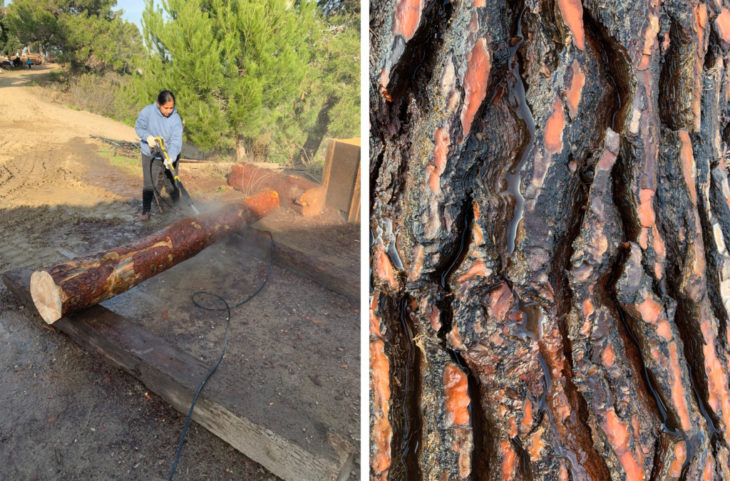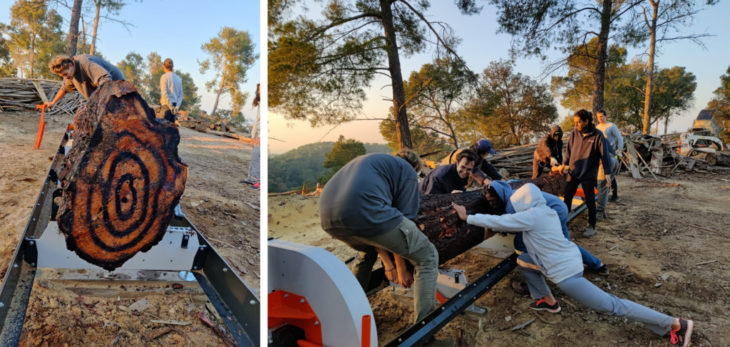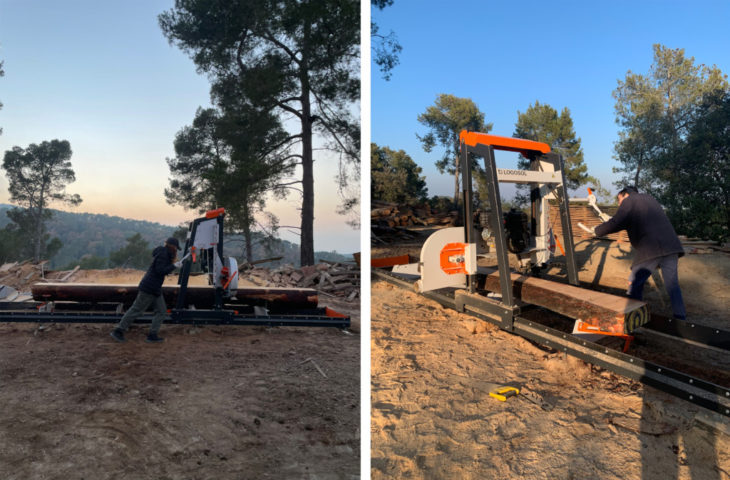According to studies, lumber is a generic term referring to a variety of lengths of wood in the material and construction industry. The pieces are cut from trunks of trees and are mostly characterized by square or rectangular sections.
“The processing of timber in Valldaura Labs”, a post explaining step by step forestry management done in Valldaura, we now explain the next process of timber processing which will later on help to develop the final project of this masters.
Cleaning station
After selecting logs that will proceed to cutting, the first step is to take them to the cleaning station where pressurized water is used in order to remove stones or stuck bark. The purpose of this is to have the cleanest surface as to protect the hacksaw for the next step.

Power washing and bark texture
Cutting process
Once the logs are washed they are moved to the cutting area, composed by a large horizontal band-saw. Due to the different sections and diameters of each log it is important to find the best position and fix it to the structure frame, in some cases it is necessary to make custom cuts to eliminate excess bark or standardize the cutting area to obtain more usable pieces and generate less waste.

Fixing log into frame structure for cutting
For defining a flat base we start by cutting the first layer, then proceed to make small cuts of 3.5 cm height at the starting point of the log so it becomes a guideline for the complete cuts. With the side handle (as you can see on the pictures below) by pushing the horizontal band-saw slowly we now create the final wood boards.

Band-saw cutting process
Lay flat to dry
Finally each sheet is moved to the lumber storing area, assembled with leftover pieces of wood that act like spacers and stacked in between each layer to provide ventilation throughout the slats, laying the wood to dry usually takes a year or more to make sure a better later on usage and prevent the pieces from bulging. Each year the timber harvesting starts earlier so it gives more drying time and efficiency for the final MAEBB project to be built.

Lumber air drying storing
This document is a process of harvesting timber @ IAAC (Institute for Advanced Architecture of Catalonia) developed in the Master in Advanced Ecological Buildings and Biocities (MABB01) 2021/22.
Students: Pongpol Punjawaytegul, Suwapat Rodprasert, Shagun Modi, Zani Gichuki, Lillian Beauttah, Andrea Rubio.
Faculty: Alex Hadley and Philipp Wienkämper